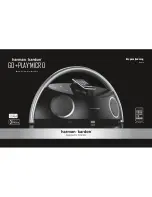
A DIVISION OF ACCO BRANDS CORPORATION
Q:
Will
the
USB
‐
A
ports
on
my
laptop
work
with
USB
‐
C
accessories
if
I
use
a
USB
‐
A
to
USB
‐
C
adapter?
A:
USB
‐
A
supports
data
transmission
only,
while
USB
‐
C
may
support
video,
power
delivery,
and
data.
A
USB
‐
C
to
USB
‐
A
adapter
will
support
data
transfer,
but
the
video
and
power
delivery
features
of
USB
‐
C
will
not
work.
Q:
How
does
my
USB
‐
C
cable
know
what
device
I
have
and
what
functions
the
USB
‐
C
port
on
my
device
can
perform?
A:
The
laptop
or
tablet
and
the
USB
‐
C
accessory
do
a
“handshake”
when
first
connected
to
each
other.
The
“handshake”
is
a
quick
exchange
of
information
on
what
is
supported
between
the
host
device
and
the
accessory.
1.
The
software
and
hardware
embedded
in
the
USB
‐
C
laptop
determine
what
types
of
functions
are
allowed
via
its
USB
‐
C
port,
and
the
capabilities
of
the
laptop
will
be
communicated
to
the
accessory
during
the
“handshake”.
2.
Only
the
functions
that
are
allowed
by
both
the
computer
and
the
accessory
via
the
USB
‐
C
connection
will
work.
Q:
Are
the
Kensington
USB
‐
C
products
all
Plug
&
Play?
A:
Yes,
all
our
USB
‐
C
devices
can
be
installed
without
the
need
for
software
downloads
or
drivers
(except
Mac
devices,
see
below)
when
connecting
to
a
host
device
using
Windows
10
and
Chrome
OS
(R53
or
above),
given
that
the
laptop
manufacturer
has
all
the
supporting
features
built
‐
in
to
the
USB
‐
C
port(s):
Please
note:
For
Windows
10
and
Chrome
OS
(R53
or
above)
,
the
docking
stations
are
Plug
&
Play.
The
PC
may
start
installing
a
driver
for
the
peripherals
attached
through
the
dock
(keyboard,
mouse,
etc.)
during
setup,
but
no
driver
is
required
for
the
dock
itself.
For
Mac
OS,
docking
station
users
will
need
to
install
a
driver
for
the
Ethernet
port.
The
one
‐
time
driver
installation
can
be
downloaded
at
software.kensington.com
.
For
all
systems,
to
ensure
the
best
video
performance
your
host
device
may
need
to
have
its
graphics
card
updated
with
a
driver
download
by
running
a
system
update.





























